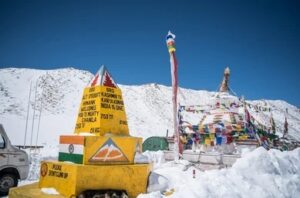Saving Money on a Trip and Smart Packing
Saving money on a trip and smart packing is possible with some smart planning and flexibility. Here are several strategies to help you cut costs while maximizing your travel experience:
1. Plan Ahead and Be Flexible
Book in advance: Flights, accommodations, and transportation options are usually cheaper when booked early.
Flexible travel dates: If your travel dates are flexible, use tools like Google Flights or Skyscanner to find the cheapest times to travel.
Travel in the off-season: Destinations are less crowded and more affordable during off-peak months.
2. Use Budget-Friendly Accommodations
Stay in hostels or guesthouses: These options are often cheaper than hotels and offer a chance to meet fellow travelers.
Airbnb or vacation rentals: They are often more affordable than hotels and provide a kitchen, so you can cook some meals.
Consider house-sitting or couch-surfing: If you’re open to a more adventurous experience, these options can offer free stays.
3. Save on Food and Drinks
Eat like a local: Street food or local eateries are often cheaper and give you a more authentic experience.
Grocery shopping: If you have access to a kitchen, buying groceries and preparing your own meals can save a lot of money.
Limit dining out: Treat yourself to a few special meals but avoid eating at restaurants for every meal.
4. Use Public Transport
Use local transportation: Public buses, trains, and metros are significantly cheaper than taxis or ride-sharing services.
Walk or rent a bike: It’s a great way to explore a city and also save on transport costs.
5. Free or Low-Cost Activities
Free tours and attractions: Many cities offer free walking tours, museums, or cultural sites. Research free attractions ahead of time.
City passes: Some cities offer tourist passes that bundle multiple attractions for a lower price than individual tickets.
Nature and outdoor activities: Hiking, swimming, and sightseeing are often free or low-cost activities that can still provide amazing experiences.
6. Smart Flight Strategies
Budget airlines: Look for deals on budget airlines. Just be cautious about extra fees for baggage, seat selection, etc.
Use points or miles: If you have a credit card that accumulates travel rewards, use those points to save on flights or accommodations.
Layovers and connecting flights: Sometimes indirect flights are cheaper. If you don’t mind the extra time, it can save you a lot.
7. Choose Destinations Wisely
Opt for affordable destinations: Some countries or cities are cheaper to travel in than others, offering great experiences at lower costs (e.g., Southeast Asia, Eastern Europe, or South America).
Exchange rates: Take advantage of favorable exchange rates to stretch your budget further.
8. Limit Souvenir Spending
Instead of spending money on souvenirs, collect photos, postcards, or small meaningful items that remind you of the trip.
DIY souvenirs: Some destinations offer experiences like making your own crafts (pottery, weaving, etc.) which can be a fun, personal souvenir.
9. Look for Travel Deals and Discounts
Use travel apps and deal sites: Platforms like Groupon, Travelzoo, or Airbnb Experiences can help you find discounts on activities, accommodations, or meals.
Student, senior, or group discounts: Always ask if there are any discounts available for groups, students, or seniors.
10. Travel Insurance
Get travel insurance: While it might seem like an extra cost, it can save you a lot of money in case of emergencies or trip cancellations.
By using these strategies, you can enjoy a memorable trip without blowing your budget. The key is to prioritize experiences that matter to you and find creative ways to cut costs without sacrificing too much comfort or enjoyment.
What to Pack for a Smart Trip
1. Essential Documents
- Passport/Visa (if traveling internationally)
- Driver’s license or ID
- Boarding passes, tickets, and travel confirmations (both digital and printed copies)
- Travel insurance details
- Credit/Debit cards and some local currency
- Emergency contact information
- Copies of important documents (store digitally and have printed versions)
2. Clothing
- Weather-appropriate clothing: Check the weather forecast for your destination and pack accordingly.
- Comfortable walking shoes: Essential for exploring.
- Layering pieces: T-shirts, sweaters, jackets depending on the climate.
- Undergarments and socks (enough for the trip plus a few extras)
- Sleepwear
- Swimwear (if swimming or beaches are part of your trip)
- Lightweight rain jacket or poncho (in case of rain)
- Dressier outfit (for special occasions, dinners, or formal settings)
3. Toiletries
- Toothbrush, toothpaste, and floss
- Shampoo, conditioner, and soap (travel-sized or solid versions to save space)
- Deodorant
- Hairbrush/comb and hair ties
- Razor and shaving cream
- Sunscreen and lip balm
- Moisturizer
- Contact lenses and solution (if needed)
- Makeup (if applicable) and makeup remover wipes
- Hand sanitizer and wet wipes
4. Medications and Health Items
- Prescription medications (enough for the duration of the trip)
- Over-the-counter medications: Pain relievers, allergy meds, motion sickness pills, etc.
- First-aid kit: Band-aids, antiseptic wipes, and other basics
- Insect repellent
- Vitamins or supplements
5. Tech and Gadgets
- Phone and charger
- Portable power bank (to keep your devices charged on the go)
- Adapters and converters (if traveling internationally)
- Headphones or earbuds
- Laptop or tablet (if necessary)
- Camera (if you prefer not to rely on your phone for photos)
- E-reader or books
- Portable Wi-Fi or SIM card (for international data)
6. Travel-Specific Items
- Luggage or backpack: Ensure it’s appropriate for your travel style.
- Daypack: A small backpack or bag for day trips and excursions.
- Packing cubes: To organize your clothing and belongings.
- Reusable water bottle (preferably collapsible to save space).
- Travel pillow, eye mask, and earplugs (for comfortable flights or bus rides).
- Travel towel (lightweight and quick-drying).
- Locks for your luggage.
- Laundry bag (for dirty clothes).
- Ziploc bags (for organizing small items, toiletries, or wet clothes).
7. Entertainment and Comfort
- Books or magazines
- Travel games or cards (for downtime)
- Snacks for the journey
- Journal or notebook (if you like to document your travels)
8. Destination-Specific Items
- Sunglasses and hat (for sunny destinations)
- Travel guidebook or map
- Beach towel or mat (if going to the beach)
Winter accessories: Gloves, scarf, and beanie (for cold destinations)
Special equipment: Hiking gear, snorkeling mask, or other specific items for your planned activities
9. Extras
- Reusable shopping bag (for groceries or shopping).
- Umbrella (if expecting rain).
- Luggage tags and ID labels.
Packing Tips:
Pack light: Choose versatile clothing that you can mix and match, and avoid overpacking.
Roll your clothes: Rolling your clothes can save space and reduce wrinkles.
Carry-on essentials: Always pack essentials like documents, a change of clothes, and toiletries in your carry-on in case your luggage is delayed.
Leave some room: For souvenirs or items you might pick up during the trip.
Tailor this list to your specific trip to ensure you’re prepared for all situations while keeping your luggage manageable!






